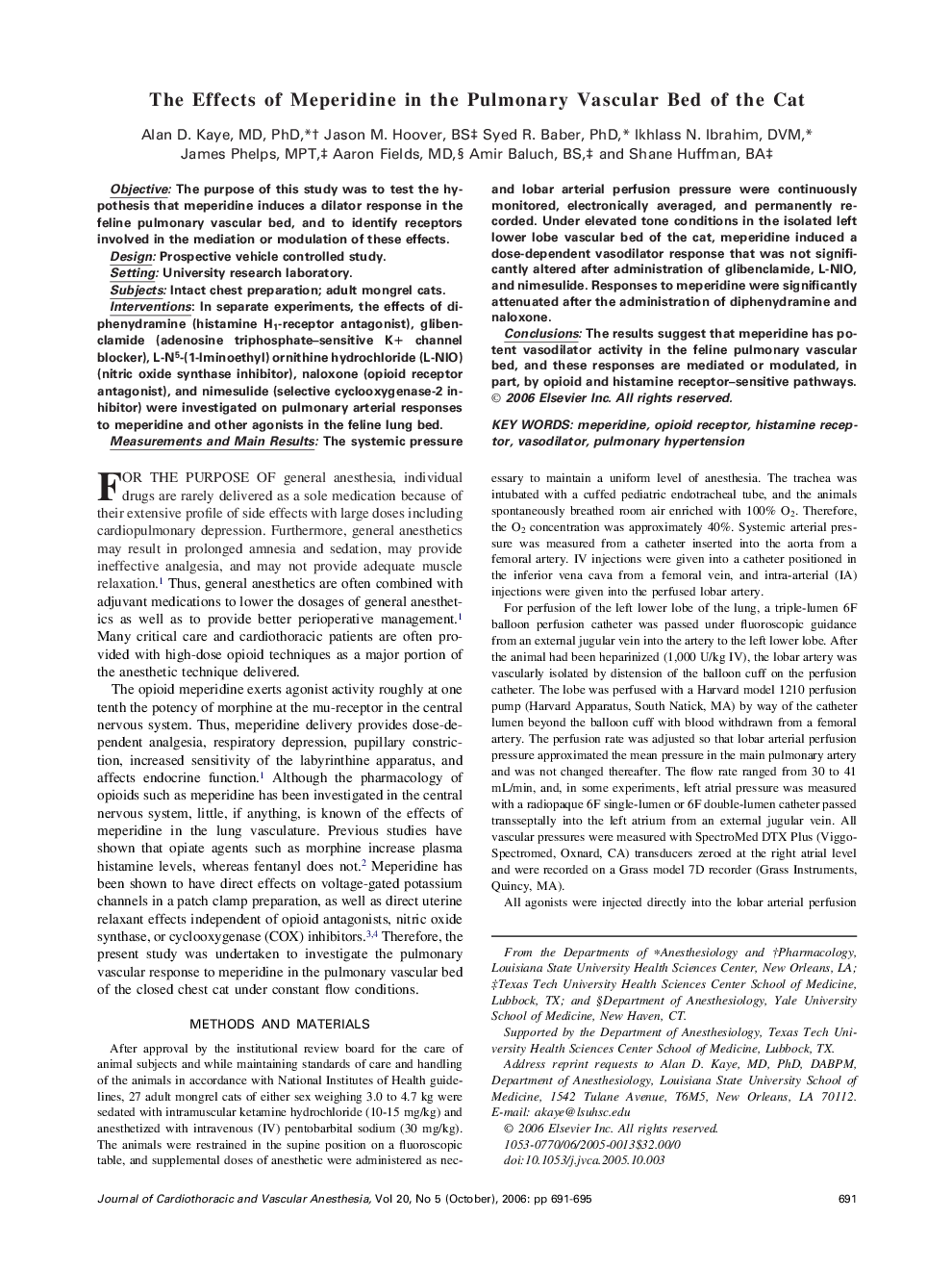| Article ID | Journal | Published Year | Pages | File Type |
|---|---|---|---|---|
| 2761569 | Journal of Cardiothoracic and Vascular Anesthesia | 2006 | 5 Pages |
Objective: The purpose of this study was to test the hypothesis that meperidine induces a dilator response in the feline pulmonary vascular bed, and to identify receptors involved in the mediation or modulation of these effects.Design: Prospective vehicle controlled study.Setting: University research laboratory.Subjects: Intact chest preparation; adult mongrel cats.Interventions: In separate experiments, the effects of diphenydramine (histamine H1-receptor antagonist), glibenclamide (adenosine triphosphate–sensitive K+ channel blocker), L-N5-(1-Iminoethyl) ornithine hydrochloride (L-NIO) (nitric oxide synthase inhibitor), naloxone (opioid receptor antagonist), and nimesulide (selective cyclooxygenase-2 inhibitor) were investigated on pulmonary arterial responses to meperidine and other agonists in the feline lung bed.Measurements and Main Results: The systemic pressure and lobar arterial perfusion pressure were continuously monitored, electronically averaged, and permanently recorded. Under elevated tone conditions in the isolated left lower lobe vascular bed of the cat, meperidine induced a dose-dependent vasodilator response that was not significantly altered after administration of glibenclamide, L-NIO, and nimesulide. Responses to meperidine were significantly attenuated after the administration of diphenydramine and naloxone.Conclusions: The results suggest that meperidine has potent vasodilator activity in the feline pulmonary vascular bed, and these responses are mediated or modulated, in part, by opioid and histamine receptor–sensitive pathways.
